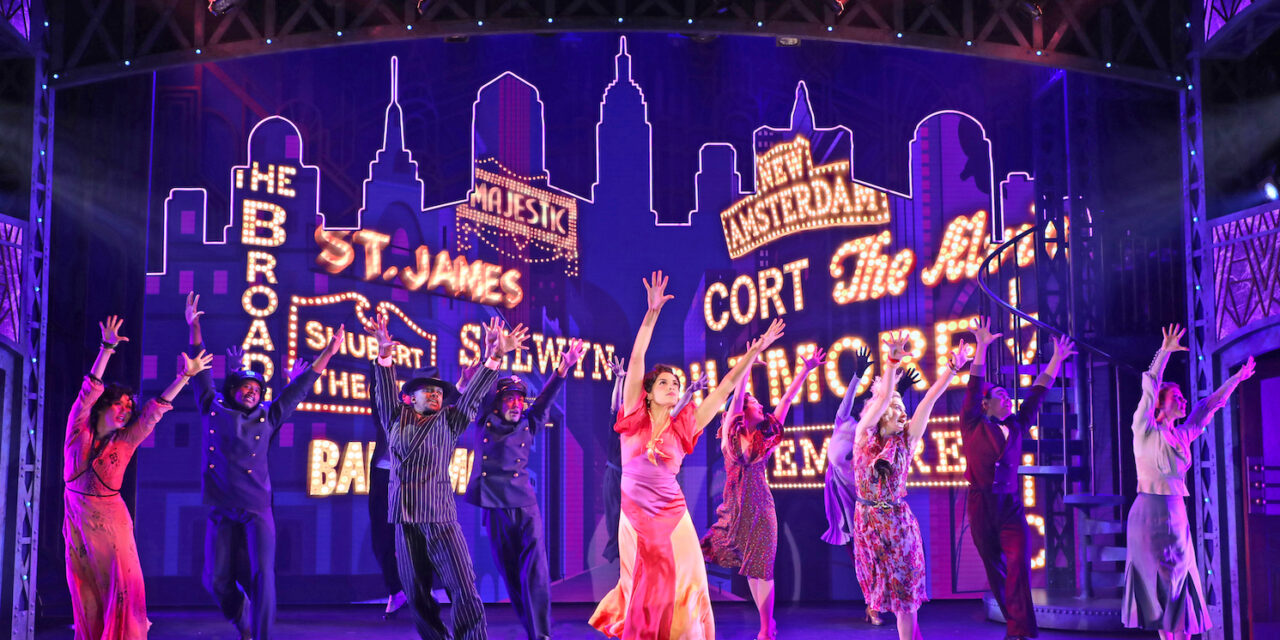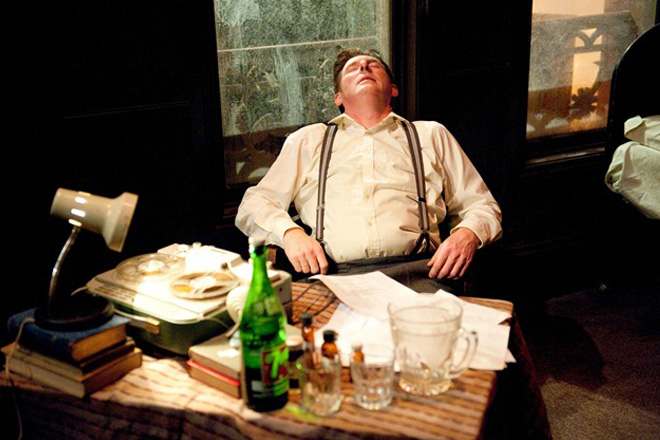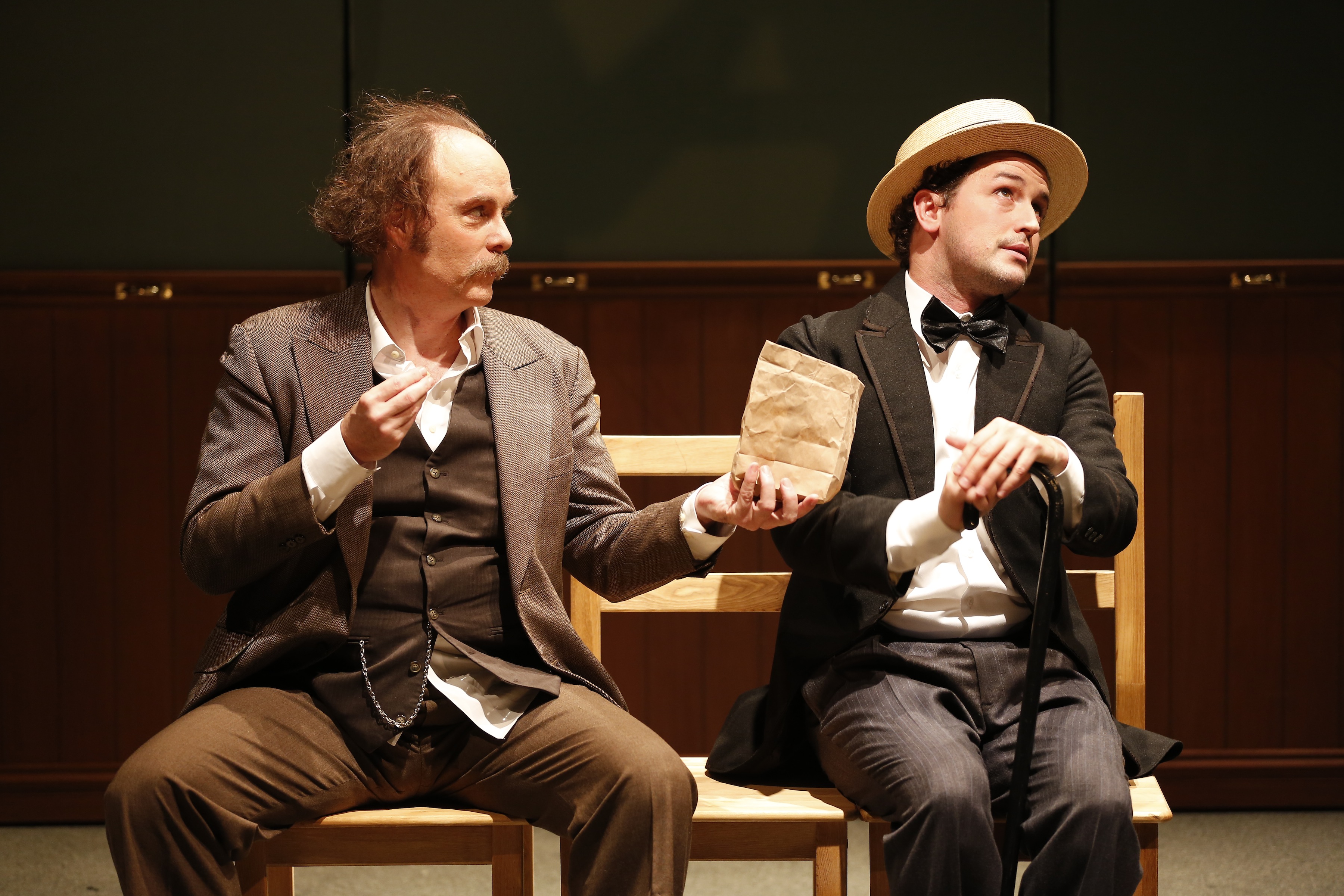By Ron Fassler . . .
I consider myself fortunate to have seen the original Broadway production of 42nd Street in its opening week, back in 1980. The biggest hit of that season, it won the Tony for Best Musical and went on to run for more than eight years, even longer than the record-breaking seven-year run of Hello, Dolly!, then the jewel in the crown of the extravagant David Merrick, the man responsible for producing them both. A revival twenty-one years later, in 2001, won the Tony for Best Revival, lovingly restaged by Randy Skinner, a dance assistant on the original. Now once again, another twenty-one years later, Mr. Skinner has returned to his beloved show and reconfigured it with a smaller cast, snugly fitting it onto the cozy stage of The Goodspeed in East Haddam, Connecticut with spectacular results.
Seriously, it’s spectacular.
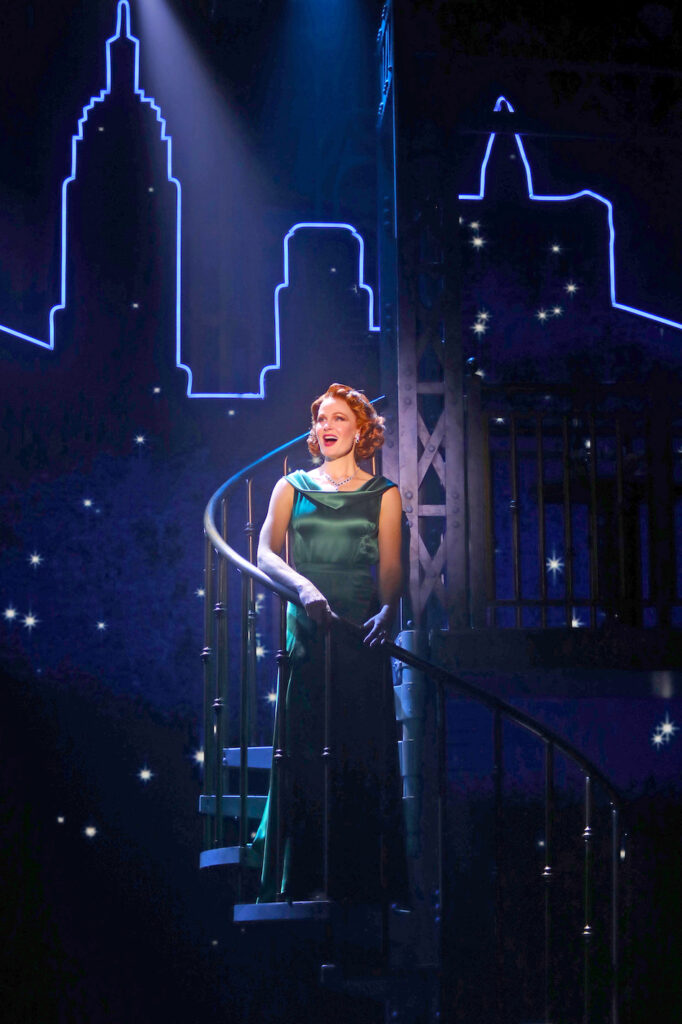
For anyone unfamiliar with its lineage, 1933’s 42nd Street began as a novel by Bradford Ropes, published one year prior, and was made into a pre-Code, black and white, Warner Bros musical that was a smash hit in its day, nearly single-handedly saving its studio from bankruptcy. It was nominated for the Academy Award for Best Picture and, by the time David Merrick had the idea of making it into a Broadway musical, had been a film classic for almost fifty years. Adding to the already terrific score by composer Harry Warren and lyricist Al Dubin, were the interpolation of numbers from other films for which the team was responsible (with a tiny bit of additional help from Johnny Mercer and Mort Dixon). It was also the final show from Gower Champion, one of Broadway’s most creative and durable director-choreographers, who died the morning of its opening night, a news story Merrick personally kept from getting out to reporters, leading to his shocking announcement at the curtain call. The announcement, left everyone in the company on stage, as well as its glamourous opening night patrons, stunned in surprise; and it was front-page news around the world the next day, ensuring it as a show everyone had to see.
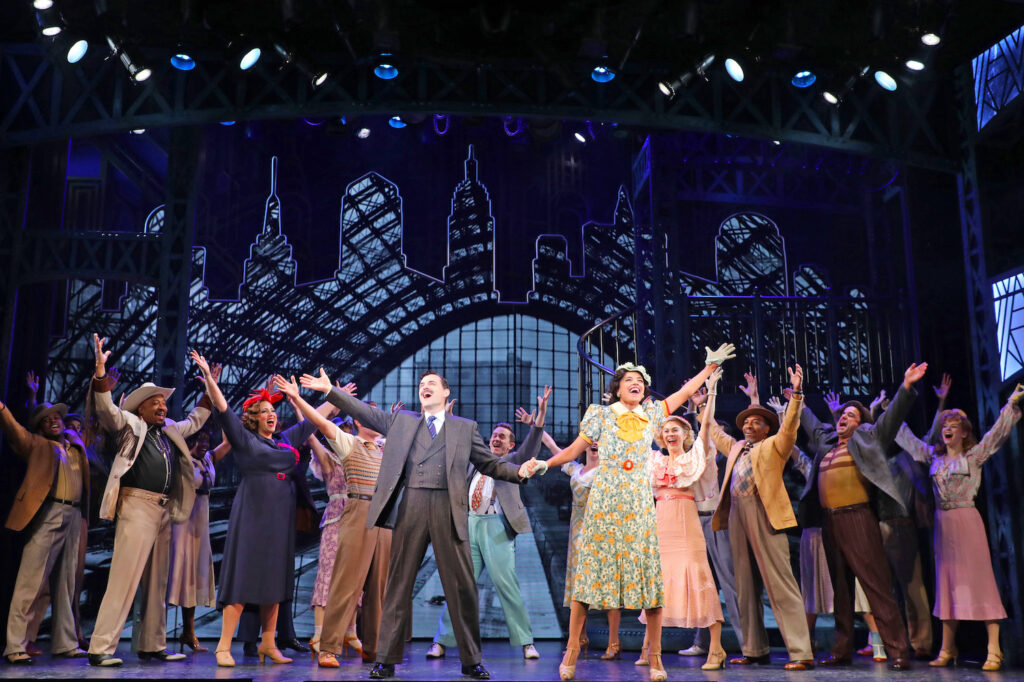
Extremely well-crafted both in its original form as well as its stage adaptation, it tells a story mimicked for decades in nearly every form. The tale of a down-on-his-luck Broadway director’s one chance to climb back up to the top during the depths of the Depression, his hopes all riding on Pretty Lady (a show with a plot and characters we’re never too sure about, but that’s beside the point). When his leading lady breaks her ankle, he’s forced to turn to the youngest kid in the chorus who, it’s all agreed, has what it takes to take over for the star, even though she’s a rank amateur, just off the bus from Allentown, PA. The amazing thing is that, in all its goofiness, audiences have always bought what it’s selling, as it’s sold with tremendous gusto (and talent). It’s sort of foolproof in that it’s a wish-fulfillment story with characters you want to root for. And then there are the songs, most of which are well-established in the Great American Songbook: “You’re Getting to be a Habit with Me,” “Dames,” “With Plenty of Money and You,” “I Only Have Eyes for You,” “We’re in the Money,” “Lullaby of Broadway, “About a Quarter to Nine,” “Shuffle Off to Buffalo” and, naturally, the title song. It’s an embarrassment of riches (a cliché I’m not embarrassed to invoke).
For anyone who hasn’t had the luxury of attending a show at Goodspeed, a theater where many major Broadway success stories had their humble beginnings—like Man of La Mancha, Annie and Shenandoah—its performance space is small but mighty. That Skinner has managed to squeeze in the suggestions of massive scenery by the use of a few key set pieces and state-of-the-art projections, is a master stroke. It evokes everything you need, and though his chorus totals just six men and six women, due to the stage’s intimacy, it feels as full as necessary. There’s no doubt you’re watching a big production number, even if it’s been downsized. That’s the art of illusion.
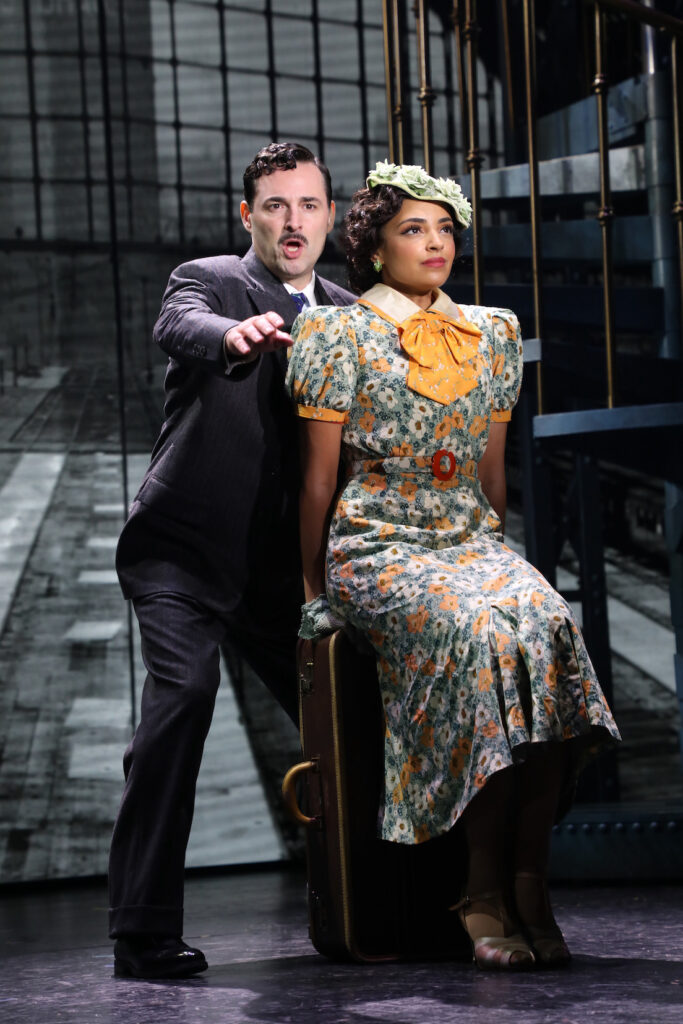
As for the actors, all are top-notch singers, even Max von Essen in the role of the musical’s director, Julian Marsh. It was a genuine thrill to hear his one solo, a reprise of the title tune at the end of the show sung with such vigor and heart. As Dorothy Brock, the tempestuous star of the show-within-a-show, Kate Baldwin, one of the most prolific and talented of Broadway’s leading ladies, has a field day with the comedy. And when she sings, you are enveloped in a sound that is second to none. In the role of ingenue, Peggy Sawyer, the one who is “going out there a youngster but has to come back a star,” is played by relative newcomer, Carina-Kay Louchiey. Having just made her Broadway debut this past season in the Michael Jackson musical, MJ, she is certainly someone to watch. There is charming support from Lisa Howard and E. Clayton Cornelious as Maggie and Bert, the husband-wife team that are in the show, as well as its authors and producers. The entire cast is solid from top to bottom.
The projection design mentioned earlier is by Shawn Duan and the scenic design by Michael Carnahan. Their work, in addition to costumes by Kara Harmon, lighting by Cory Pattak and sound by Jay Hilton, help make this 42nd Street a joyous occasion. And credit must be paid to the first-rate orchestra, led by musical director Adam Souza, greatly enhanced by Rob Berman’s music supervision and additional arrangements. Finally, a huge tip of the hat to Randy Skinner’s fine work at the helm of this lovingly attended production. Treat yourself to a trip down memory lane by way of East Haddam and this Goodspeed presentation of a crowd-pleaser the likes of which they don’t make anymore.
42nd Street. Through November 6 at The Goodspeed (6 Main Street, East Haddam, CT). www.goodspeed.org
Photos: Diane Sobolewski


